Introduction
Autism spectrum disorder (ASD) and transgender identity are facets of human diversity that can overlap, presenting unique challenges and experiences for individuals. Recent efforts have focused on creating inclusive and supportive environments for those who navigate both autism and gender diversity. A key initiative includes a research team that welcomes participation from autistic, neurodivergent, and 2SLGBTQIA+ individuals, emphasizing the importance of diverse voices in shaping research and advocacy efforts.
The team's inclusive approach allows for flexible communication methods and a commitment to anti-oppression principles, ensuring that all team members, regardless of their background or communication style, can contribute meaningfully to the research process.
Understanding the experiences of autistic individuals as they age is another critical area where research is scant. Studies have shown that many autistic individuals face co-occurring mental health conditions, which may not always be adequately identified, leading to gaps in support. This is particularly concerning for autistic students, who may encounter additional challenges such as bullying and trauma, increasing their susceptibility to mental health issues.
Amidst a backdrop of societal debates surrounding gender identity, it's essential to acknowledge and support the nuanced needs of those at the intersection of autism and transgender identity. Their voices and experiences are vital in informing policies and practices that affirm the rights and dignity of all individuals.
Understanding Autism and Transgenderism
Autism spectrum disorder (ASD) and transgender identity are facets of human diversity that can overlap, presenting unique challenges and experiences for individuals. Recent efforts have focused on creating inclusive and supportive environments for those who navigate both autism and gender diversity. A key initiative includes a research team that welcomes participation from autistic, neurodivergent, and 2SLGBTQIA+ individuals, emphasizing the importance of diverse voices in shaping research and advocacy efforts. The team's inclusive approach allows for flexible communication methods and a commitment to anti-oppression principles, ensuring that all team members, regardless of their background or communication style, can contribute meaningfully to the research process.
The necessity of such initiatives is underscored by statistics showing that a significant portion of individuals seeking gender services also exhibit features of autism. In one audit, 34% of those assessed for gender services had a pre-existing autism diagnosis or displayed autistic traits, with current data suggesting an increase to over 50%. This intersectionality is not just an academic interest but has real-world implications, as trans individuals face heightened risks of politicization and barriers to gender-affirming care, especially when they are also autistic.
Understanding the experiences of autistic individuals as they age is another critical area where research is scant. Studies have shown that many autistic individuals face co-occurring mental health conditions, which may not always be adequately identified, leading to gaps in support. This is particularly concerning for autistic students, who may encounter additional challenges such as bullying and trauma, increasing their susceptibility to mental health issues.
Amidst a backdrop of societal debates surrounding gender identity, it's essential to acknowledge and support the nuanced needs of those at the intersection of autism and transgender identity. Their voices and experiences are vital in informing policies and practices that affirm the rights and dignity of all individuals.
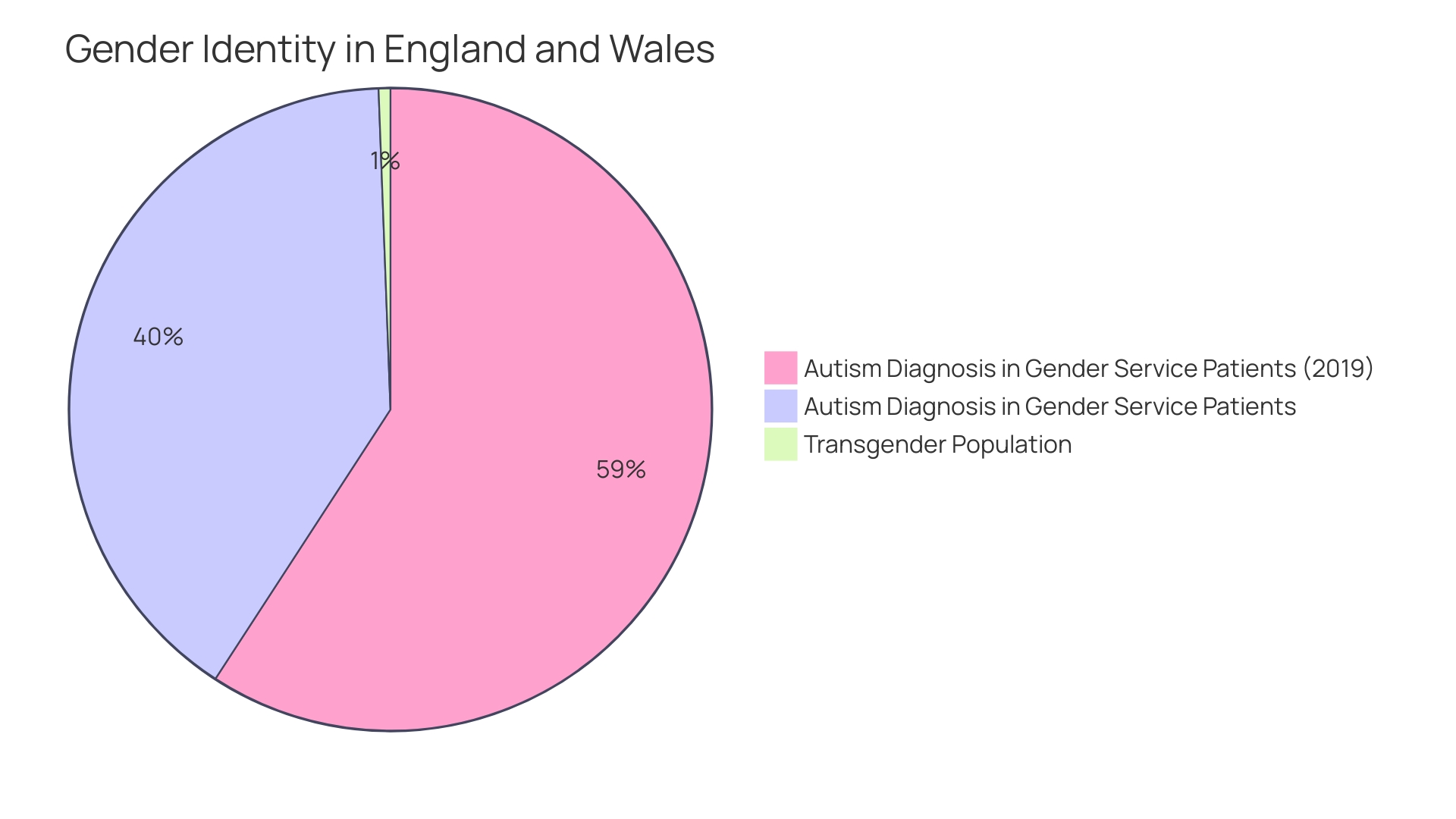
The Intersection of Autism and Gender Identity
Autism intersects with various aspects of identity, including gender. This intersection can present unique challenges, particularly for those who are both autistic and identify as transgender or gender non-conforming. Gender identity, distinct from the sex assigned at birth, is an internal experience of gender that may or may not align with societal expectations. The term 'transgender' is increasingly used to describe those whose gender identity or expression differs from their birth-assigned sex, while 'transsexual' refers to individuals who have undergone medical or surgical gender affirmation. Terms like genderqueer, bigendered, and agendered acknowledge the spectrum of gender beyond the binary.
Studies show a significant rise in the number of people identifying as transgender, with shifts in the age of presentation. Within autism, identity development is a lifelong process, particularly crucial during adolescence. Personal identity involves self-definition through individual characteristics, while social identity is connected to community belonging. For autistic individuals, embracing an autistic identity can influence life choices, like career paths that play to autistic strengths.
Representations of transgender and autistic experiences are evolving, challenging previous medical models that pathologize gender diversity. Current guidelines, such as those for gender-affirming care, emphasize the importance of supporting individuals' gender identities without assuming pathology. However, the nature of gender diversity remains complex, with social components like race and class intersecting with gender and autism.
Emerging evidence suggests a higher prevalence of autism among transgender populations. For example, a study at the National Gender Service showed that in 2019, 34% of individuals assessed had autism or displayed autistic traits, with current figures rising above 50%. This underlines the need for nuanced support and understanding of the experiences of those who navigate both autistic and transgender identities.
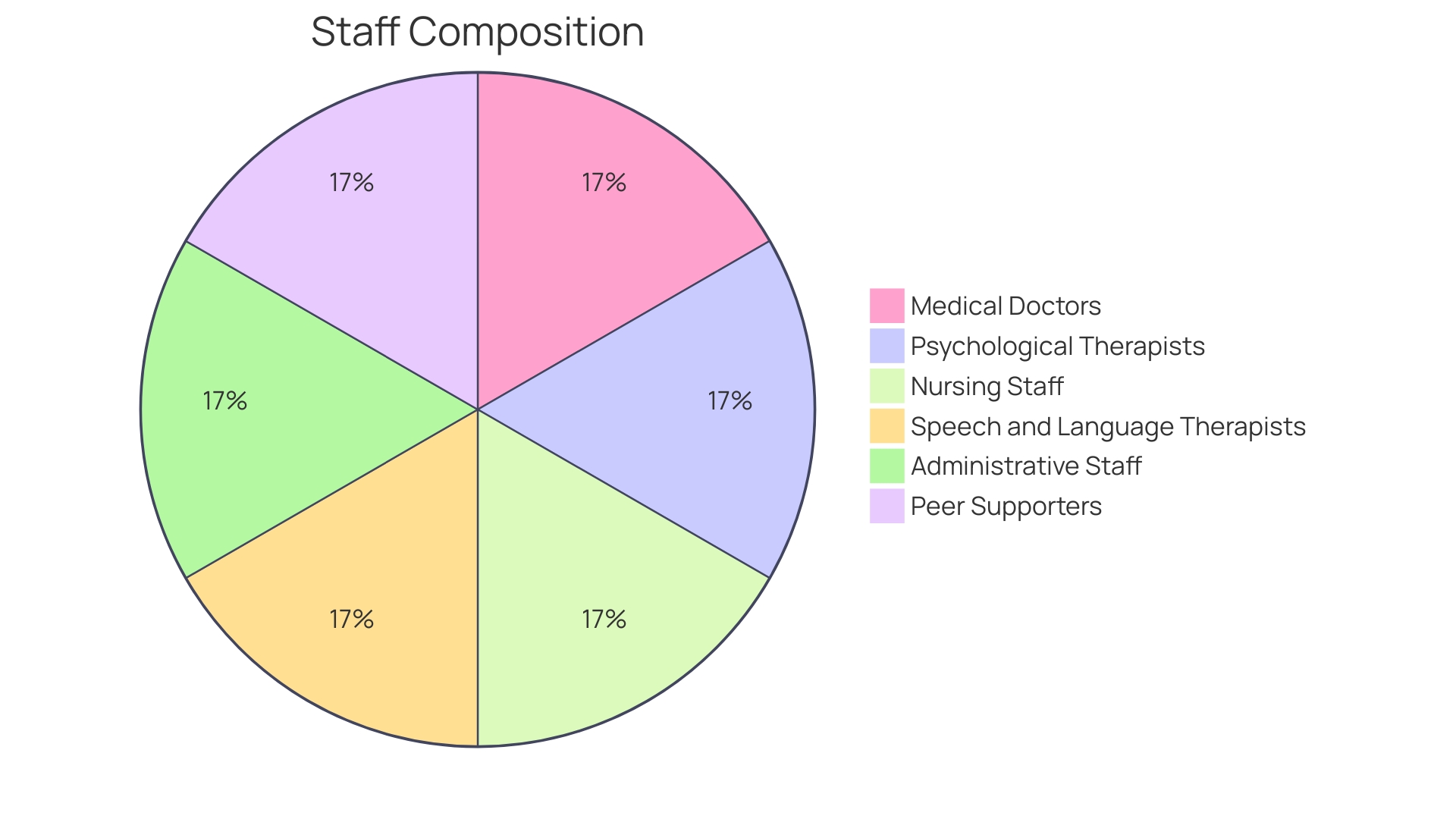
Challenges Faced by Autistic Transgender Individuals
Autistic transgender individuals often face distinct challenges when reconciling their gender identity with societal expectations. As they embark on their gender exploration journey, they may struggle with social norms and managing sensory sensitivities. Autistic individuals, already navigating the complexities of social communication and interactions, may find that the added layer of gender identity brings forth additional hurdles. The intersection of autism and transgender identity means finding personalized support is crucial.
The experiences of living with a disability, such as Spina Bifida, highlight the intense medicalization and societal misconceptions that can accompany physical conditions. This parallel is seen in the autistic transgender community, where individuals often undergo extensive medical procedures and face a lack of societal recognition of their complete personhood. Their journey is not just about gender transition but also about being seen and respected as whole individuals with diverse identities.
Awareness of the unique identities within the autism spectrum is crucial. With autism incidence rates now estimated at 1 in 36, recognition of the varying presentations of autism is more important than ever. Autistic individuals might utilize 'compensation' strategies to blend into a world that isn't designed for them, reflecting their resilience and adaptability.
To support this community effectively, mental health professionals are encouraged to practice inclusivity by asking for preferred pronouns and names from the outset. This approach fosters trust and understanding, as misgendering can significantly impact mental well-being. It's vital to understand that while some individuals may seek medical or surgical treatment for gender affirmation, others may not, and their gender identity should be respected regardless.
The health and well-being of transgender individuals are often adversely affected by stigma and discrimination. Access to healthcare remains a challenge, with a significant number reporting they have avoided medical care due to cost or fear of mistreatment. Moreover, the transgender community continues to face higher risks for mental health issues, such as suicide and PTSD, indicating the need for comprehensive psychiatric care.
In conclusion, the complexities of being both autistic and transgender require a nuanced understanding and tailored support that respects the full humanity and individuality of each person. It's a call for a society that embraces neurodiversity and gender diversity, recognizing the strengths and contributions of every individual.
Importance of Comprehensive Support
Understanding and addressing the unique needs of autistic individuals navigating gender identity is critical for their mental health and overall well-being. Autistic individuals face core challenges in social communication and may display rigid or repetitive behaviors. Studies show that nearly one-third to over half may also experience intellectual disabilities, adding layers of complexity to their daily social participation. Supporting autistic transgender individuals in finding their place within society requires inclusive sex education that respects and reflects their experiences. This includes using language and concepts that are cognitively natural and affirming, such as 'gender modality,' which acknowledges the individual's current gender identity in relation to the gender assigned at birth. Mental health awareness is key, as research indicates that when autistic individuals incorporate autism into their personal identity, it influences important life choices and fosters a sense of belonging to the autistic community. Parental and caregiver support plays a crucial role in creating an equitable environment where these individuals can thrive. By providing resources and fostering an understanding of the assets and unmet needs autistic individuals bring to their communities, caregivers can help reduce stress and promote healthy development. Recent initiatives encourage participation of autistic and 2SLGBTQIA+ individuals in research, advocating for social justice and access for all. This collaborative approach recognizes the diversity within the autistic community and aims to ensure their empowered representation. Empathy and support from parents and caregivers are paramount in empowering autistic transgender individuals to navigate their experiences with confidence and resilience.
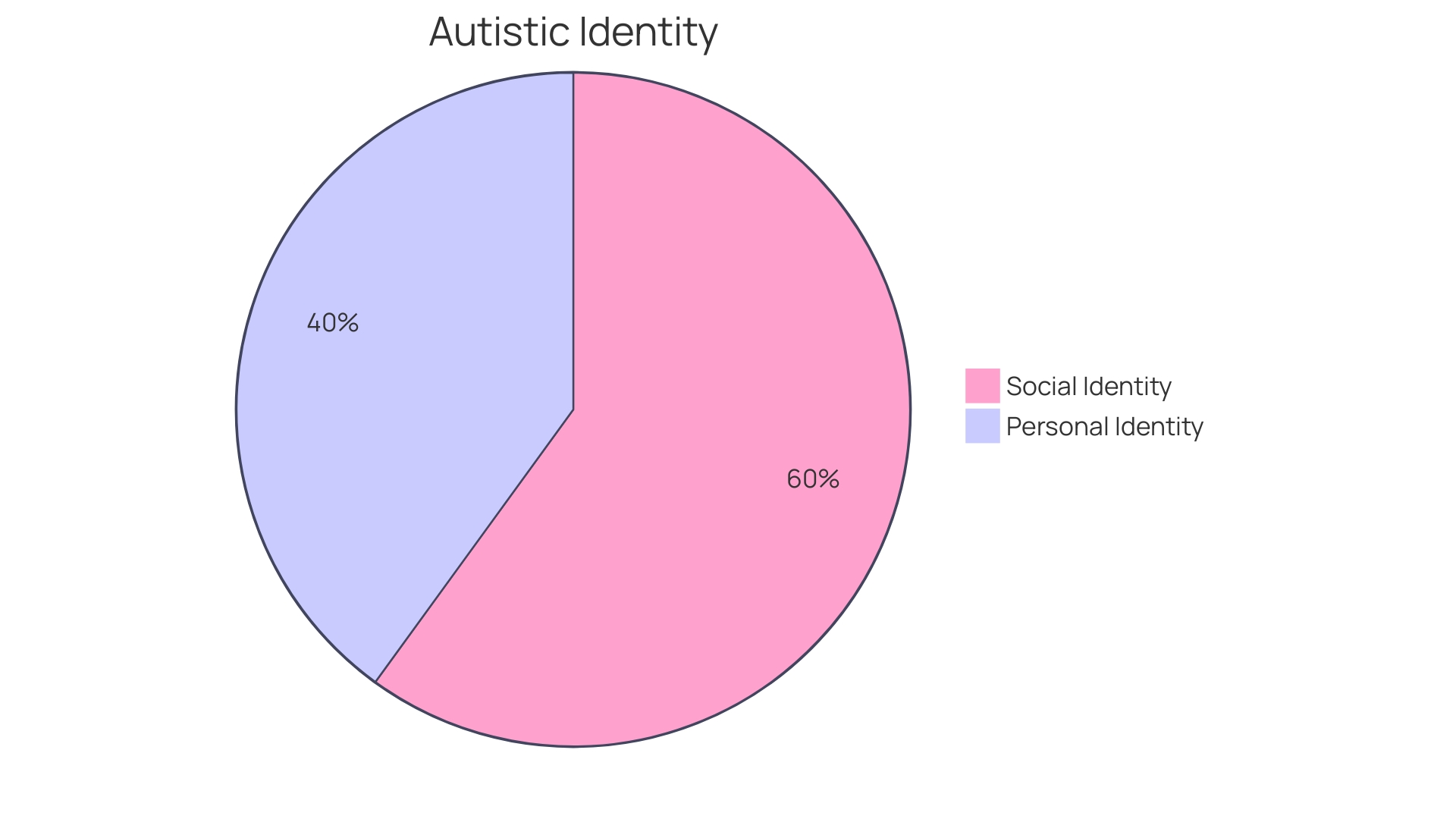
Strategies for Supporting Gender Identity Exploration
Navigating the journey of gender identity exploration is particularly complex for autistic individuals, who may face distinct challenges due to their neurodiversity. Tailoring strategies to suit their unique needs is essential. For instance, embracing varied communication methods—including technology-assisted speech or text—can significantly assist in their self-expression and participation in discussions about their identity. Ensuring sensory comfort is another critical consideration, as sensory sensitivities are common among autistic individuals and can impact their ability to engage in spaces that are not accommodating of these needs.
Creating inclusive and safe environments is paramount for autistic transgender individuals to freely explore and express their gender identity. Research teams and advocacy groups emphasize the importance of anti-oppression and social justice, advocating for equity across disability, neurodivergence, race, gender, sexuality, and class. This inclusive approach is evident in the ongoing efforts to provide accessible platforms for engagement, such as online meetings that cater to various communication preferences and recognize the unique energy dynamics that may characterize autistic experiences.
The embrace of neurodiversity, a term that acknowledges a variety of neurological conditions—including autism—as natural variations in the human brain, offers a broader framework for understanding identity. The neurodiversity movement, deeply rooted in the idea of celebrating these differences rather than viewing them as deficits, aligns with the pursuit of allowing autistic individuals to define their personal and social identities on their own terms. This perspective is essential when considering gender identity exploration, as it supports the notion that every individual's identity development is a lifelong and deeply personal journey.
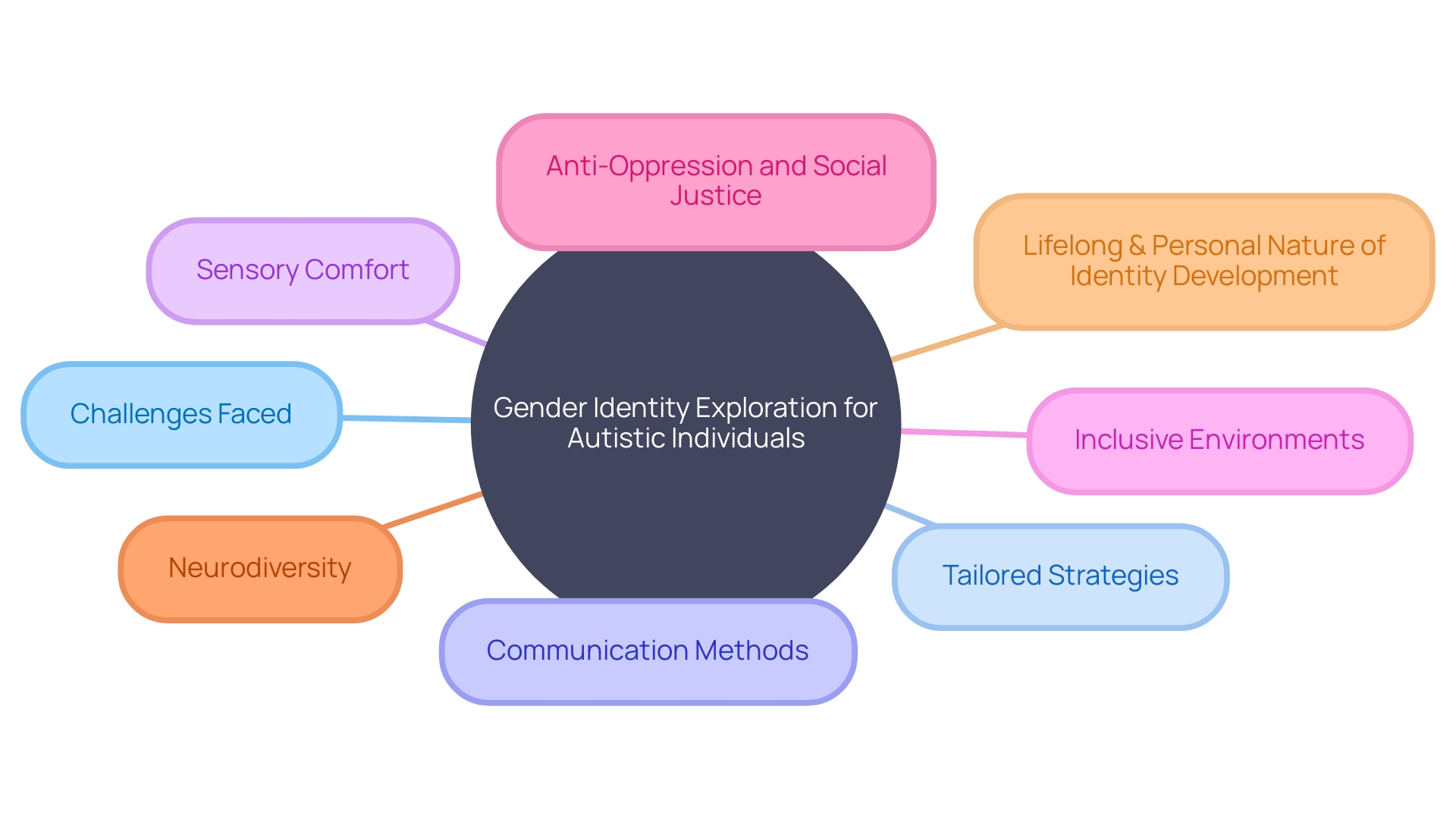
Clinical Approaches and Ethical Considerations
The nexus of autism and gender identity is complex and demands sensitive, informed clinical care. Autistic individuals, who may also identify as transgender or nonbinary, face unique challenges that require clinicians to adopt a multifaceted approach to support their mental health and well-being effectively. Emerging evidence, including systematic reviews from the University of York under The Cass Review, indicates a higher prevalence of autism among individuals referred to gender services. This data underscores the necessity for healthcare professionals to evolve beyond traditional paradigms and embrace a nuanced understanding of the intersection between autism and gender identity.
Clinicians must be acutely aware of the high instances of misgendering within healthcare settings and its detrimental impact on mental health, as highlighted by Mohammed in his discourse on best practices for mental health professionals. Affirming an individual's gender identity from the outset by asking for preferred pronouns can establish trust and mitigate the negative effects of past misgendering experiences. Additionally, healthcare providers must navigate the current landscape of fluctuating discriminatory policies that can hinder access to care for transgender individuals, particularly those from marginalized communities.
Statistics from surveys conducted on trans and gender non-conforming individuals reveal significant barriers in accessing healthcare, with approximately one-quarter of respondents forgoing necessary medical attention due to cost or fear of mistreatment. These findings speak volumes about the stigma and discrimination that pervade medical institutions, necessitating an ethical, patient-centered approach to care.
Interdisciplinary collaboration is paramount, drawing on the internationally recognized Standards of Care outlined by WPATH, to foster holistic support for autistic transgender individuals. Such collaboration ensures the adoption of evidence-based practices, respects individual privacy preferences, and caters to the specific support needs of each person—moving away from misleading labels like 'high-functioning' to a more accurate representation of lived experiences. With the right clinical approaches, we can aspire to transform healthcare spaces into inclusive environments where the dignity and identity of every individual are upheld.
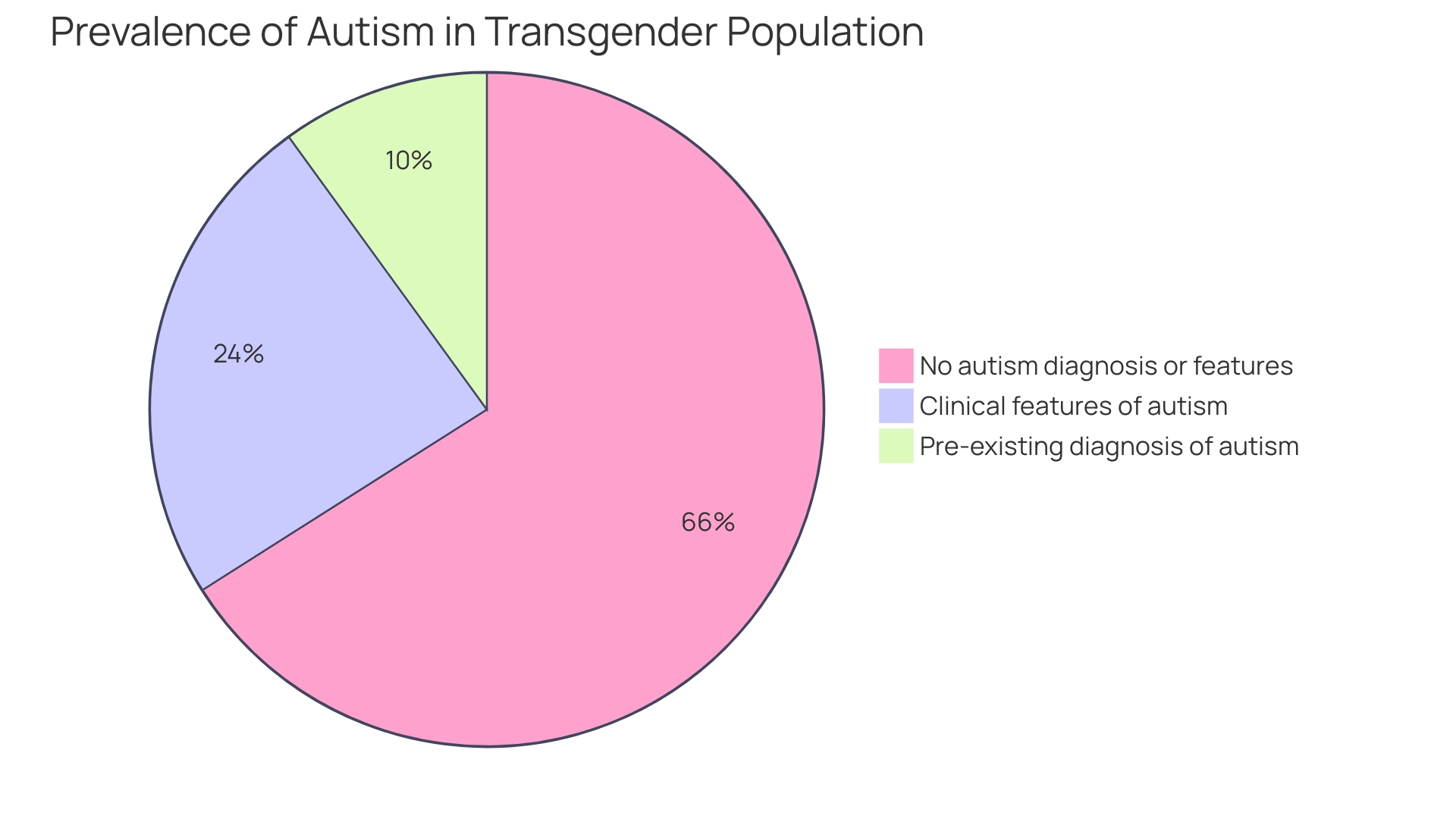
Barriers to Accessing Gender-Affirming Care
Autistic transgender individuals often encounter a labyrinth of barriers in accessing gender-affirming care. Gender affirmation encompasses a spectrum of services, including medical, surgical, mental health, and non-medical support. Crucially, these services are tailored to each person's unique journey, as not everyone seeks the same care, and some may forgo medical interventions altogether.
However, a growing number of state actions are curtailing access to these essential services, particularly for minors. Since Arkansas initiated restrictions in 2021, a wave of similar policies has emerged, impacting not only young people but also healthcare providers and parents. Despite legal challenges, many of these restrictive laws remain enforced.
Amidst this landscape, the Interagency Autism Coordinating Committee (IACC) has been instrumental in advancing autism research and services, emphasizing the importance of collaboration with the autism community. Similarly, research teams are advocating for a more inclusive approach, embracing neurodiversity and intersectionality—acknowledging the layers of identity that shape experiences, including gender, race, and disability.
To address the challenges autistic transgender individuals face, it is essential to foster an environment of respect and understanding. Misgendering, for instance, can significantly affect mental well-being. Initiating interactions by inquiring about a person's pronouns establishes trust and recognition. Understanding the diverse definitions of gender-affirming care within the community is also crucial, as it can vary widely among individuals.
Statistics reveal that stigma and discrimination in healthcare have profound effects on transgender people's health, with many avoiding necessary medical care due to cost or fear of mistreatment. Furthermore, the relationship between gender affirmation and mental health outcomes, such as the risk of suicide and PTSD, underscores the need for comprehensive care.
Thus, fostering a healthcare environment that is neuro-affirming and sensitive to the complexities of gender identity is paramount. It requires ongoing education, advocacy, and a commitment to principles of anti-oppression and social justice. Recognizing the intrinsic value of each person's identity and providing equitable access to gender-affirming care can pave the way for better well-being and fulfillment.
Adapting Communication Styles for Autistic Transgender Individuals
Adapting our communication styles to effectively support autistic transgender individuals is not just beneficial—it's crucial. The journey of Lil, a 17-year-old transitioning from a special school to a new post-16 destination, illustrates the significance of understanding and addressing the communication challenges faced by autistic individuals during such transitions. The development of a 'Digital Story' was a step toward acknowledging the agency of autistic youth, empowering them to be the knowledgeable narrators of their own stories. Similarly, recognizing the importance of inclusive communication is reflected in the efforts of a research team welcoming autistic, neurodivergent, and/or 2SLGBTQIA+ individuals without requiring traditional academic credentials, thereby embracing diverse modes of communication and engagement.
The healthcare experiences of transgender individuals, often marked by discrimination and inadequate care, underscore the necessity for sensitive and informed communication practices. It is evident that gender-affirming healthcare not only enhances well-being but is also a protective factor against negative outcomes. In light of this, adapting communication approaches to acknowledge and leverage the strengths of autistic individuals becomes all the more imperative.
Understanding and appreciating the unique communication patterns of autistic individuals can pave the way for more meaningful interactions. For instance, some may find strength in requesting or offering empathy, while others may excel in different aspects of communication. Embracing a wide array of strategies—from augmentative and alternative communication techniques like the Picture Exchange Communication System (PECS) to structured conversational prompts—can be instrumental in fostering connection and understanding.
As we navigate the complexities of social communication, it's essential to remember that difficulties can arise on both sides. Autistic individuals may employ hidden strategies, or 'compensation,' to align with societal norms, a behavior that is often misinterpreted. The 'double empathy problem' highlights the reciprocal nature of these misunderstandings, emphasizing the need for a concerted effort to bridge the communication gap.
The intersectionality of gender, race, class, and disability further complicates the lives of autistic individuals, particularly girls and women who may camouflage their autistic traits. With autism prevalence estimates at 1 in 44 eight-year-old children and a sex bias in diagnosis, it is imperative that all healthcare providers are equipped to support the unique needs of their autistic patients. This includes being aware of the increased health risks, expenditure, and the need for tailored healthcare approaches that take into account the full spectrum of individual experiences.
Parental and Caregiver Support
Supporting autistic transgender individuals is vital for their well-being and development. For parents and caregivers, this involves embracing their child's Autistic identity, which encompasses personal characteristics and social affiliations. Understanding that identity formation, particularly during adolescence and early adulthood, is a dynamic and critical process, helps caregivers foster a nurturing environment. It's during these formative years that young people reflect on their aspirations and societal roles, making parental support crucial for their self-discovery and self-acceptance.
Creating inclusive spaces for autistic transgender youth means acknowledging the unique experiences they face. Misgendering, for instance, can significantly impact mental health. Mental health professionals recommend asking for pronouns during initial interactions to build trust and understanding. This practice is equally important for parents and caregivers to implement, as it demonstrates respect and recognition of their child's identity.
Participation in the community is also key to mental health and equity. As Dr. David Offord highlighted, a fair society ensures that all children, including those with disabilities, have their needs met and are valued for their contributions. Reducing stress and providing the necessary resources for caregivers are fundamental steps towards equity and support for autistic transgender youth.
Moreover, engaging with research and advocacy groups can be empowering for both caregivers and autistic transgender individuals. Opportunities to work with teams that value diversity, equity, and social justice not only provide support but also contribute to a broader understanding and acceptance in society. Such involvement can lead to more accessible and flexible environments that accommodate the diverse needs and energies of autistic individuals.
Mental Health Awareness and Support
Understanding the mental health of autistic transgender individuals is crucial as it significantly impacts their overall well-being. Autistic individuals often face a unique set of challenges that can affect their mental health, such as anxiety, depression, and increased rates of self-harm and suicidality. In fact, a study published in the Lancet Public Health journal indicates that gender-diverse adult populations, including non-binary transgender adults, experience a higher prevalence of mental health conditions compared to their cisgender counterparts, with long-term mental health conditions affecting approximately one in two non-binary transgender adults.
Promoting positive mental health outcomes begins with creating a supportive and accommodating environment. This includes understanding the importance of gender identity and expression—terms such as transgender, non-binary, and genderqueer describe individuals whose gender differs from expectations based on their sex assigned at birth. To foster trust and understanding, it's essential that mental health professionals ask about a patient's preferred pronouns during initial interactions, as misgendering can significantly impact a patient's well-being.
Moreover, research emphasizes the need for person-centered and neurodiversity-affirming practices that view autism as a natural variation of the human brain. Such practices focus on the strengths of autistic individuals, seeking to adapt the environment and therapeutic approaches to their needs, rather than forcing them to conform to a world not designed for them.
Stigma and discrimination in healthcare settings remain a significant barrier for many autistic transgender people. Approximately two-thirds of transgender individuals report their health status as 'good' to 'excellent,' yet many avoid seeking medical care due to fear of mistreatment or financial constraints. Nearly a quarter of transgender respondents avoided medical care in the past year due to concerns about how they would be treated.
To address these issues, there are resources and strategies that can support the mental health of autistic transgender individuals. Visual stories, for instance, can help explain complex mental health concepts in a simple, relatable way. Charities and resource hubs provide detailed information on various mental health conditions and support options.
It's imperative for mental health professionals and advocates to commit to principles of anti-oppression, social justice, and equity, recognizing that every individual's experience is unique. Collaborative research teams, including those identifying as autistic, neurodivergent, and 2SLGBTQIA+, are working towards inclusivity and access in all aspects of care, advocating for a more equitable healthcare landscape.
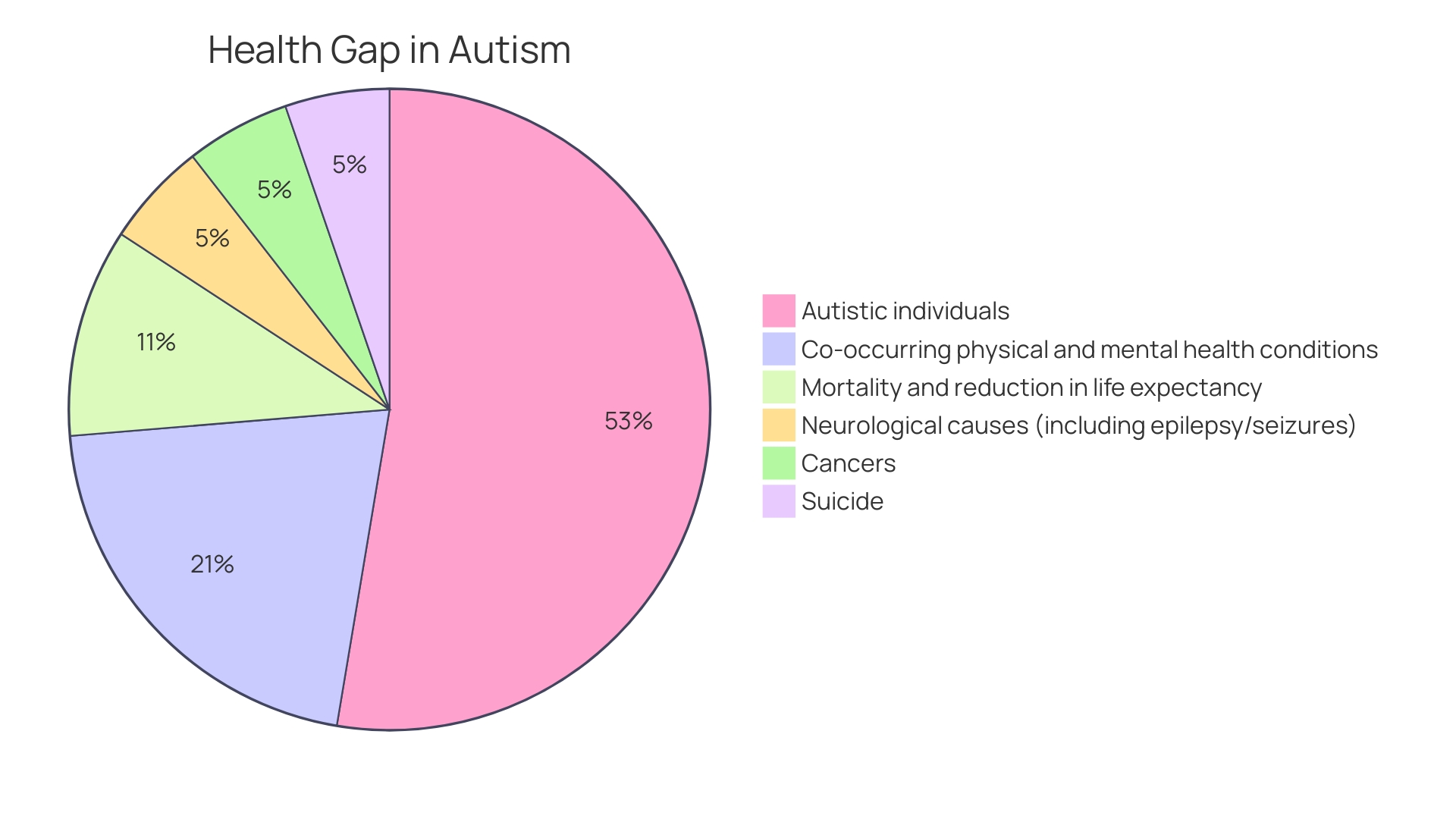
Addressing Bullying and Discrimination
Autism and gender diversity intersect in unique ways that can increase vulnerability for individuals who identify as both autistic and transgender. Research indicates that transgender, nonbinary, and gender-diverse individuals are more likely to exhibit autistic traits or receive a diagnosis of autism than their cisgender counterparts. In fact, studies from institutions like the University of Cambridge suggest that trans people are up to six times more likely to be autistic. However, the politicization of trans identities, particularly amidst a barrage of hostile legislation, further complicates the lives of autistic transgender individuals.
Empirical data shows that these individuals often face significant barriers when seeking medical and mental health care due to systemic stigma and discrimination. The challenges are stark: approximately a quarter of transgender people have refrained from seeing a doctor even when necessary, citing costs and fear of mistreatment as primary reasons. This is especially disheartening considering that general health assessments reveal that most rate their health from fair to excellent.
Sharing these realities can foster empathy and understanding. As expressed by Emma Holiday and others, writing has become a form of therapy and a means to convey the intense experiences associated with gender dysphoria and the transgender journey. Stories of individuals like Emily, who learned about her autism through social media, and Poppy McDonald, an autistic artist advocating for the community, highlight the importance of personal narratives in raising awareness.
Moreover, the tragic case of Nex Benedict, a 16-year-old nonbinary student in Oklahoma, underscores the dire consequences that bullying and exclusion can have on vulnerable populations. Nex's story, compounded by the discovery of a 'combined toxicity' of medications used for allergies and depression, illustrates the urgent need for inclusive communities that understand and protect their transgender and autistic members.
This context calls for diligent advocacy and the creation of safe, nurturing environments. Guides and glossaries have been developed by civil organizations and trans-informed journalists to educate content creators on the nuances of these experiences. It is imperative to challenge misinformation and support transgender autistic individuals in their pursuit of acceptance and well-being.
Conclusion
In conclusion, the article highlights the intersection of autism and transgender identity, emphasizing the need for tailored support and understanding. Efforts to create inclusive environments for autistic and transgender individuals prioritize diverse voices and anti-oppression principles. Access to comprehensive support and mental health awareness is crucial for promoting well-being.
Adapting communication styles and creating safe spaces are essential for autistic transgender individuals to explore their gender identity. Sensitive and informed clinical care, interdisciplinary collaboration, and patient-centered approaches are necessary for their mental health.
Parental and caregiver support plays a vital role in creating an equitable environment where autistic transgender individuals can thrive. Embracing autistic identity, fostering inclusivity, and engaging with research and advocacy groups are important steps.
Mental health awareness and support are crucial for the well-being of autistic transgender individuals. Neurodiversity-affirming practices and addressing bullying and discrimination are essential in creating a more inclusive society.
In conclusion, by understanding and addressing the unique needs of autistic transgender individuals, we can promote their well-being and foster a society that embraces neurodiversity and gender diversity. Tailored support, comprehensive care, and empowering individuals to navigate their experiences with confidence are key to building an inclusive and equitable society.
Join us in creating an inclusive society for autistic and transgender individuals!




